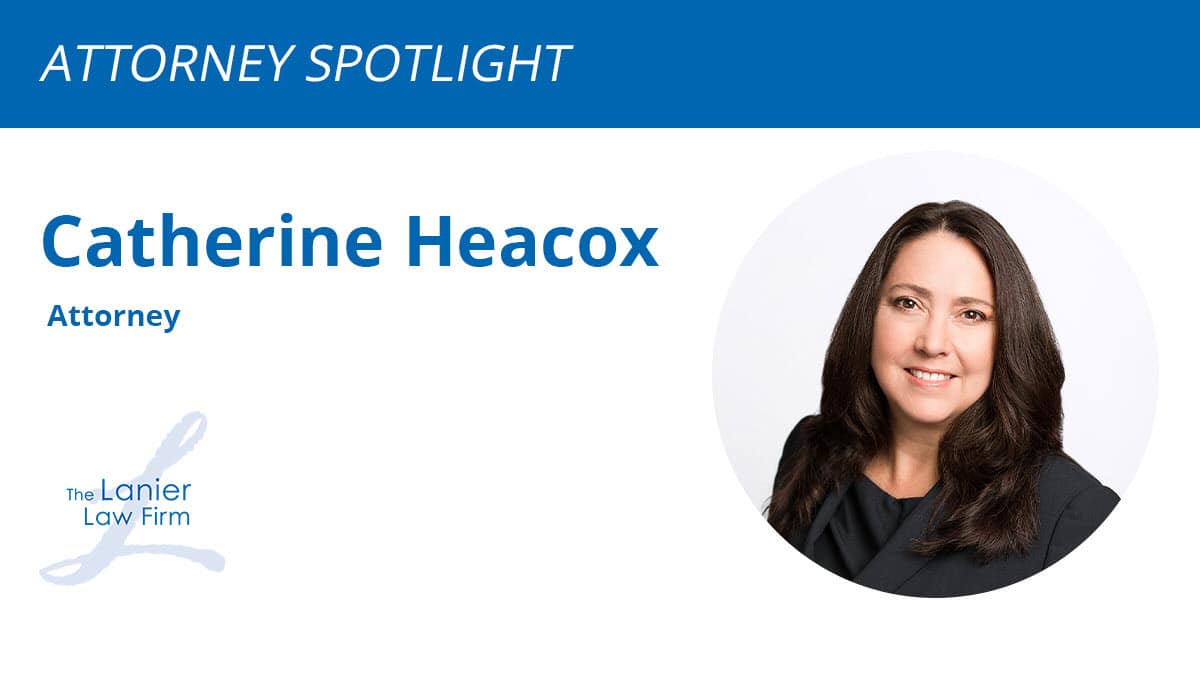Each month, we like to feature one of our attorneys to help you get to know our team better. We sat down with one of our New York attorneys, Catherine Heacox, to talk about her background in the legal field and what she is currently working on.

What led you to a legal career?
My desire to save the environment led me to a legal career. In law school, I interned with the Sierra Club and also worked a summer at the EPA [the United States Environmental Protection Agency] and another one at the NJDEP [New Jersey Department of Environmental Protection]. After receiving my J.D., I went back to school to specialize in environmental law.
After graduation, I ended up working on a large “Love Canal”-type case involving claims of personal injury and property damage from water and soil contamination to homeowners’ property caused by DuPont’s 200-year history of dumping heavy metals and VOCs [volatile organic compounds] in Pompton Lakes, New Jersey, from their munitions plant turned to [a] chemical plant. That case started me on my toxic tort/product liability journey, which eventually led to my practice in pharmaceutical law.
What has been your most interesting or memorable case and why?
My most memorable cases were the Parlodel cases I handled decades ago. These cases involved a drug used to dry up the breast milk of young mothers who did not want to breastfeed. The drug was an ergot derivative (a cousin of LSD), and the claims were that it was vasoactive, causing strokes and heart attacks in these otherwise healthy young mothers. Although these cases were not ultimately financially successful, they were memorable to me because I litigated them with an amazing team of powerhouse women in the beginnings of pharmaceutical mass torts. There were many interesting issues in this case, and a team of four women lawyers handled them all because there was no MDL [multidistrict litigation].
From the initial document review, constructing the scientific theories, finding and preparing experts, briefing and arguing oppositions to Daubert and pre-emption in federal courts across the nation, putting on Daubert hearings, traveling the county taking and defending depositions, and trying a handful of cases, we handled it all, soup to nuts. At the time, I did not appreciate how exciting it was to work on such a wide variety of interesting matters, because the cases were not successful financially. However, in retrospect, it was an intellectually thrilling time in my life as a lawyer that I will never forget.
What litigation are you currently working on?
I am currently handling post-settlement work primarily for the testosterone and Xarelto litigations, as well as other litigations I have worked on over the years. Of interest in Xarelto and, to some extent, testosterone, is the large number of deceased clients and the generally low value of the settlements, which requires assisting clients with the small-estate process, where that is an option.
This can be more difficult than it sounds, depending on the family structure, the laws of the state and specific filing and notice requirements for small estates, and the abilities of the proposed representative. It is always easier to manage cases at the end where the settlements are large; low-value settlements can be very difficult to administer.
What are one or two things about you that most people don’t know?
Most people may not know that, in college, I majored in art history and minored in fine art and that I can paint a fair portrait likeness.








